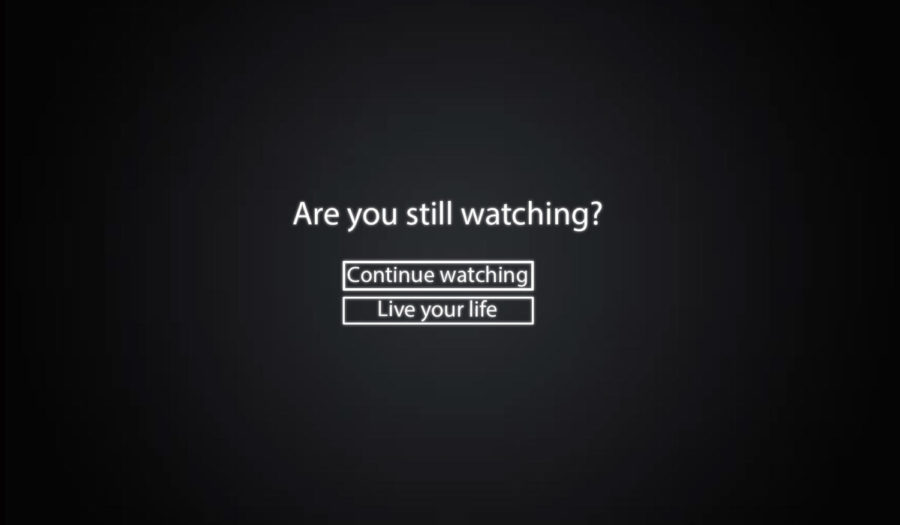Binge Watching’s Biggering: The Death of the Slow Burn
What you might not realize 10 hours into your Gray’s Anatomy binge, is that you’re actively changing the way television is created.
Ever since the year of 2007, Lord Netflix has provided needy audiences with thousands of hours of TV and movies, all available at the touch of a button. No more weeks of waiting for the next episode after a maddening cliffhanger. Now, every minute of the show is ready at your fingertips.
Financially, the binge-watching model makes sense. It gets audiences hooked and doesn’t give them the opportunity to get bored or give up before the next episode comes out. By having complete works of TV on streaming platforms, audiences are given a surplus of content to keep them entertained and invested.
What this strategy doesn’t account for is the demand that comes from having full seasons available as soon as the show premieres. Streaming services suddenly have to work much harder to keep audiences engaged with other material they have to offer.
As a result, shows become bigger and bigger. More VFX effects, more drama, more writing that is catered to what producers think will keep audiences engaged, not necessarily what will make good TV.
Even the typical episodic season’s 22 episodes has been traded out for 8-10, catering to the public’s mass shortened attention span.
Since the weekly release model has slowly died down in favor of the binging model, television shows start to be seen as a product to sell and make money from, rather than the art form it is.
When streaming services see shows as a product, it creates bad TV. Decisions start being made to keep audiences invested at all costs, and if the show isn’t making an immediate profit within the first week of release, it is seen as a failure.
The weekly release allows TV to do what it’s meant to: the slow build-up. It allows an audience to grow with the show and get invested as the plot progresses. It’s what makes something a show, not a movie.
Instead of being seen as a product for profit, TV shows need to be treated as a seed. If it’s planted, nurtured and given time to grow and prosper, it will turn into a strong healthy creation. One that can keep audiences invested and make just as much money as the flashy, drama-filled shows that are designed to do the same.
The weekly release model also enhances the TV-watching experience. The show’s fans have a week in between episodes to talk, theorize, and create fan content. By fostering a dedicated community, it creates a more meaningful watching experience and keeps the show in the public atmosphere for longer.
Though Netflix has hit shows such as Stranger Things, Bridgerton, or Squid Games, that attained massive views and publicity, they are quickly forgotten about in the years between seasons. When all of the content for a show occurs at once, it flies in one ear and out the other.
While binge-watching provides immediate rewards for streaming services and audiences alike, the money (and memory) quickly fades. The infatuation burns hot, but just as quickly, burns out.
There’s a reason that audiences continue to religiously binge-watch, despite the apparent negative effects. Through consistent streaming of content, the brain is overloaded with dopamine, and it creates a high similar to a drug. Streaming services take advantage of this and fuel the drive for binge-watching to increase subscriptions.
Netflix has lost over 200 million subscribers in the last year, and its subscriber count is only going down. Ironically, the consistent push for binge-watching has seemed to backfire on the streaming service that started this new era in media in the first place. Consumers are consistently canceling subscriptions in the gap between seasons of shows.
The most successful TV shows in the U.S. of 2022 were determined to be Yellowstone (Peacock), Severance (Apple TV), Euphoria (HBO Max), and The Book of Boba Fett (Disney+), all weekly releases.
The weekly releases seem to be on the return. And with it, the gradual realization by audiences that, while the destination is enticing, sometimes it is simply better to take the scenic route.

Sophii is a reluctant senior at Boulder High School and is both the Editorial Editor and Media Director for The Owl. Outside of school she enjoys not being at school or doing anything affiliated with school. On her own time, she loves to add books to her “TBR,” that she’ll never actually read, come up with story ideas that she’ll probably never write, and form very strong opinions on affairs that do not affect her or really anyone else, for that matter. She works at the Boulder Dinner Theatre as a glorified lunch lady. As an avid hater of purple grapes, she insists she will be a die-hard green grape afficionado for the rest of her lifetime. She thoroughly enjoys watching TV and making...


